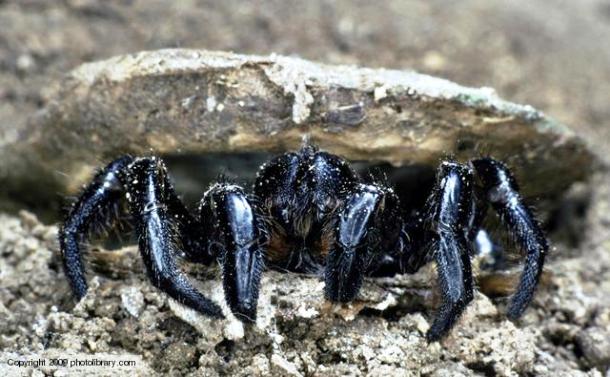Adorable Spiders That Are Not As Scary As You...
 Add image to section
Add image to section
Regal jumping spider

With adult males averaging 0.5 inch and females about 0.6 inch in length, regal jumping spiders are the largest jumping spiders in eastern North America. Males and females are easily differentiated. The males are always black with a pattern of white spots and stripes. Females often bear similar patterns, but range in color from shades of gray to vivid orange.
 Add image to section
Add image to section
Eight-spotted crab spider
 Add image to section
Add image to section
Sequined spider
 Add image to section
Add image to section
Wide – jawed viciria
 Add image to section
Add image to section
Australian garden orb weaver
 Add image to section
Add image to section
Long-horned orb-weaver
 Add image to section
Add image to section
Ant – mimic jumping spider
 Add image to section
Add image to section
Tree stump spider
 Add image to section
Add image to section
Ogre – faced spider

Distributed nearly worldwide in the tropics, these spiders got their name due to the imagined similarity between their appearance and that of the mythological creature, the ogre. The spiders make webs that they suspend between the front legs and when prey approaches, they will stretch the net to two or three times its relaxed size and propel it onto the prey.
 Add image to section
Add image to section
Peacock spider
 Add image to section
Add image to section
Heavy jumping spider
 Add image to section
Add image to section
Trapdoor spider
 Add image to section
Add image to section
Red-backed jumping spider

Occupying relatively dry habitats such as coastal dunes or oak woodlands in western North America, red-backed jumping spider is one of the largest and most commonly encountered jumping spiders. This species constructs conspicuous tubular silken nests under rocks and wood on the ground and sometimes grape vines.
 Add image to section
Add image to section
Ladybug mimic spider
 Add image to section
Add image to section
Writing spider
 Add image to section
Add image to section
Green jumping spider
 Add image to section
Add image to section
Goliath bird eating spider

After giant huntsman,the Goliath bird-eater is the world´s second largest spider by leg span and may by the largest by mass. Despite its name, the spider does not normally eat birds, it feeds on insects. It is venomous but the venom is relatively harmless and its effects are comparable to those of a wasp’s sting.
 Add image to section
Add image to section
Wasp spider
 Add image to section
Add image to section
Arrowhead spider

The arrowhead spider is a brightly colored arachnid whose leg span is barely 1 inch. These tiny creatures, absolutely harmless to humans, can be found during the spring, summer, and fall. They lurk around low shrubs at approximately 2 to 3 feet above ground in wooded thickets, wetlands, gardens and marsh areas.
 Add image to section
Add image to section
Himalayan jumping spider
Load more items (5 more in this list)
Adorable Spiders That Are Not As Scary As You Think
Few people say they like spiders. These little creatures are usually characterized by terms like “disgusting”, “detestable” or “revolting” but in fact, the bad reputation is entirely undeserved. Most spiders are not dangerous to humans at all. Indeed, many are beneficial because they eat other pests in our homes and gardens. If we still have not succeeded in convincing you to stop hating these little guys, these 25 adorable spiders will show you that even spiders can be cute, or at least, interesting.
 Login
Login


















